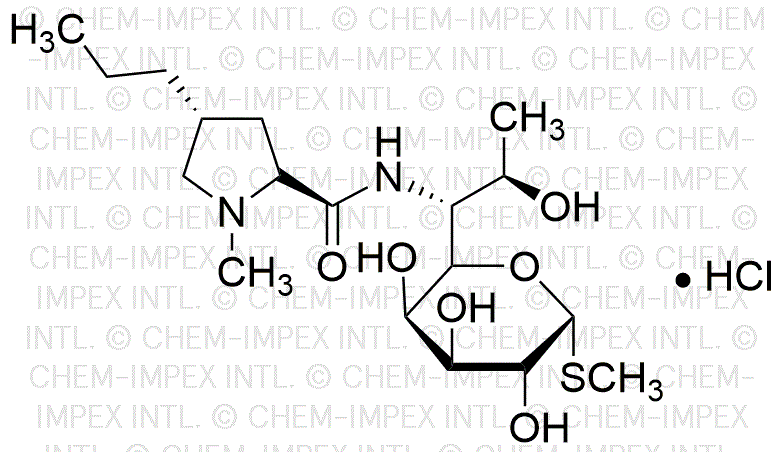Lincomycin hydrochloride is widely utilized in research focused on:
- Antibiotic Treatment: It is primarily used to treat bacterial infections, especially those caused by anaerobic bacteria. This makes it essential in clinical settings, particularly for patients allergic to penicillin.
- Veterinary Medicine: Lincomycin hydrochloride is effective in treating infections in livestock and pets, ensuring animal health and productivity in the agricultural sector.
- Research on Antibiotic Resistance: Researchers use this compound to study mechanisms of antibiotic resistance, helping to develop new strategies for combating resistant bacterial strains.
- Pharmaceutical Development: It serves as a model compound in the development of new antibiotics, providing insights into structure-activity relationships that can lead to more effective drugs.
- Topical Formulations: Lincomycin hydrochloride is included in certain topical medications for skin infections, offering a targeted approach to treatment with minimal systemic effects.
General Information
Properties
Safety and Regulations
Applications
Lincomycin hydrochloride is widely utilized in research focused on:
- Antibiotic Treatment: It is primarily used to treat bacterial infections, especially those caused by anaerobic bacteria. This makes it essential in clinical settings, particularly for patients allergic to penicillin.
- Veterinary Medicine: Lincomycin hydrochloride is effective in treating infections in livestock and pets, ensuring animal health and productivity in the agricultural sector.
- Research on Antibiotic Resistance: Researchers use this compound to study mechanisms of antibiotic resistance, helping to develop new strategies for combating resistant bacterial strains.
- Pharmaceutical Development: It serves as a model compound in the development of new antibiotics, providing insights into structure-activity relationships that can lead to more effective drugs.
- Topical Formulations: Lincomycin hydrochloride is included in certain topical medications for skin infections, offering a targeted approach to treatment with minimal systemic effects.
Documents
Safety Data Sheets (SDS)
The SDS provides comprehensive safety information on handling, storage, and disposal of the product.
Product Specification (PS)
The PS provides a comprehensive breakdown of the product’s properties, including chemical composition, physical state, purity, and storage requirements. It also details acceptable quality ranges and the product's intended applications.
Certificates of Analysis (COA)
Search for Certificates of Analysis (COA) by entering the products Lot Number. Lot and Batch Numbers can be found on a product’s label following the words ‘Lot’ or ‘Batch’.
*Catalog Number
*Lot Number
Certificates Of Origin (COO)
This COO confirms the country where the product was manufactured, and also details the materials and components used in it and whether it is derived from natural, synthetic, or other specific sources. This certificate may be required for customs, trade, and regulatory compliance.
*Catalog Number
*Lot Number
Safety Data Sheets (SDS)
The SDS provides comprehensive safety information on handling, storage, and disposal of the product.
DownloadProduct Specification (PS)
The PS provides a comprehensive breakdown of the product’s properties, including chemical composition, physical state, purity, and storage requirements. It also details acceptable quality ranges and the product's intended applications.
DownloadCertificates of Analysis (COA)
Search for Certificates of Analysis (COA) by entering the products Lot Number. Lot and Batch Numbers can be found on a product’s label following the words ‘Lot’ or ‘Batch’.
*Catalog Number
*Lot Number
Certificates Of Origin (COO)
This COO confirms the country where the product was manufactured, and also details the materials and components used in it and whether it is derived from natural, synthetic, or other specific sources. This certificate may be required for customs, trade, and regulatory compliance.


